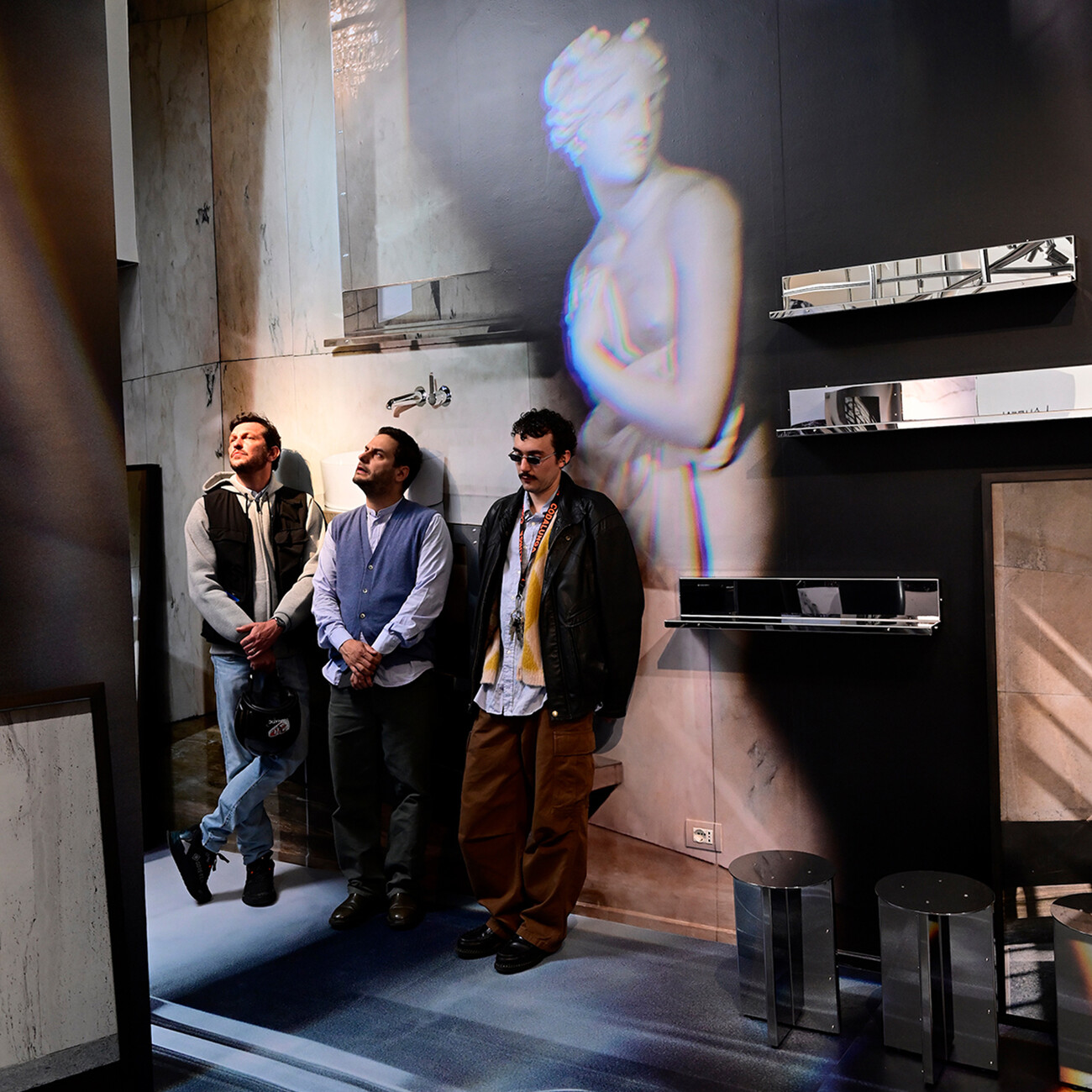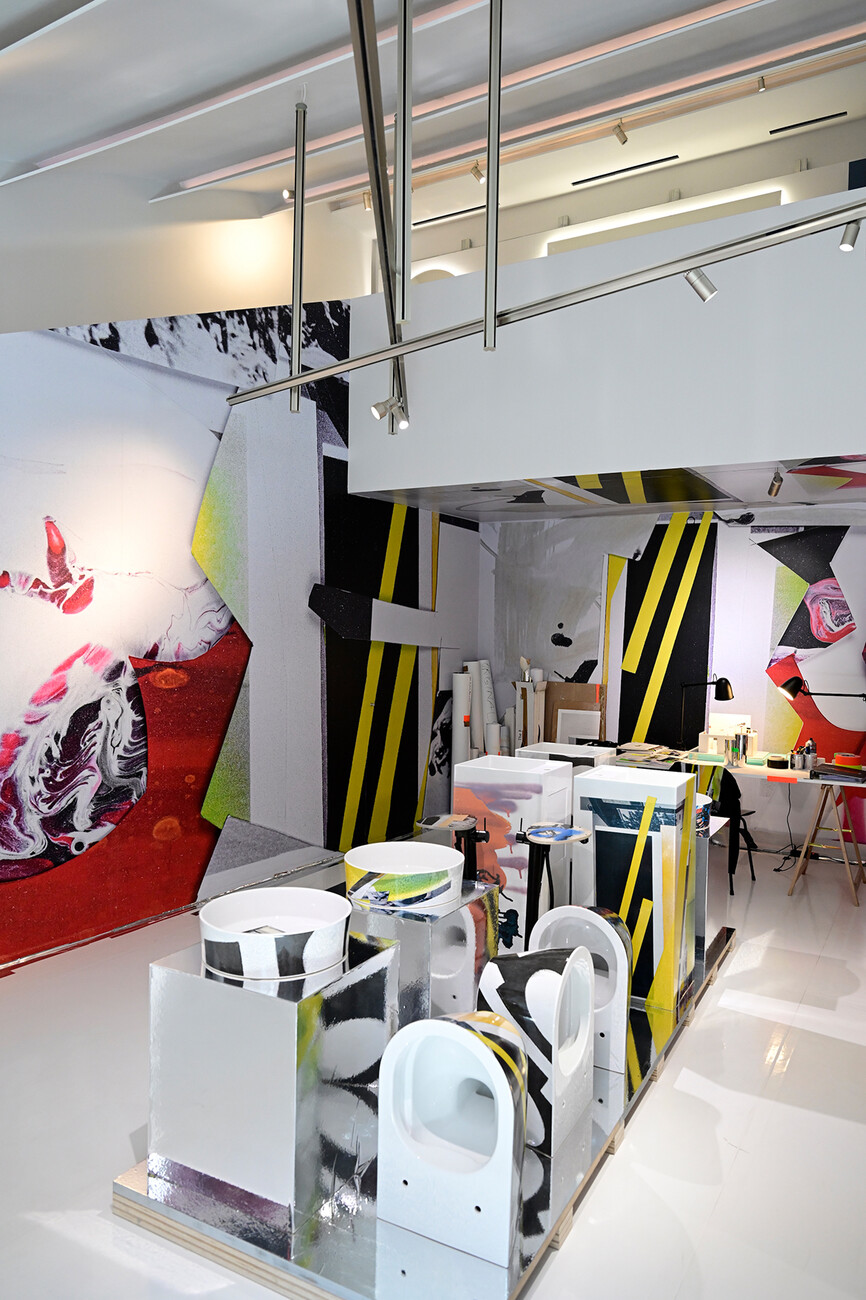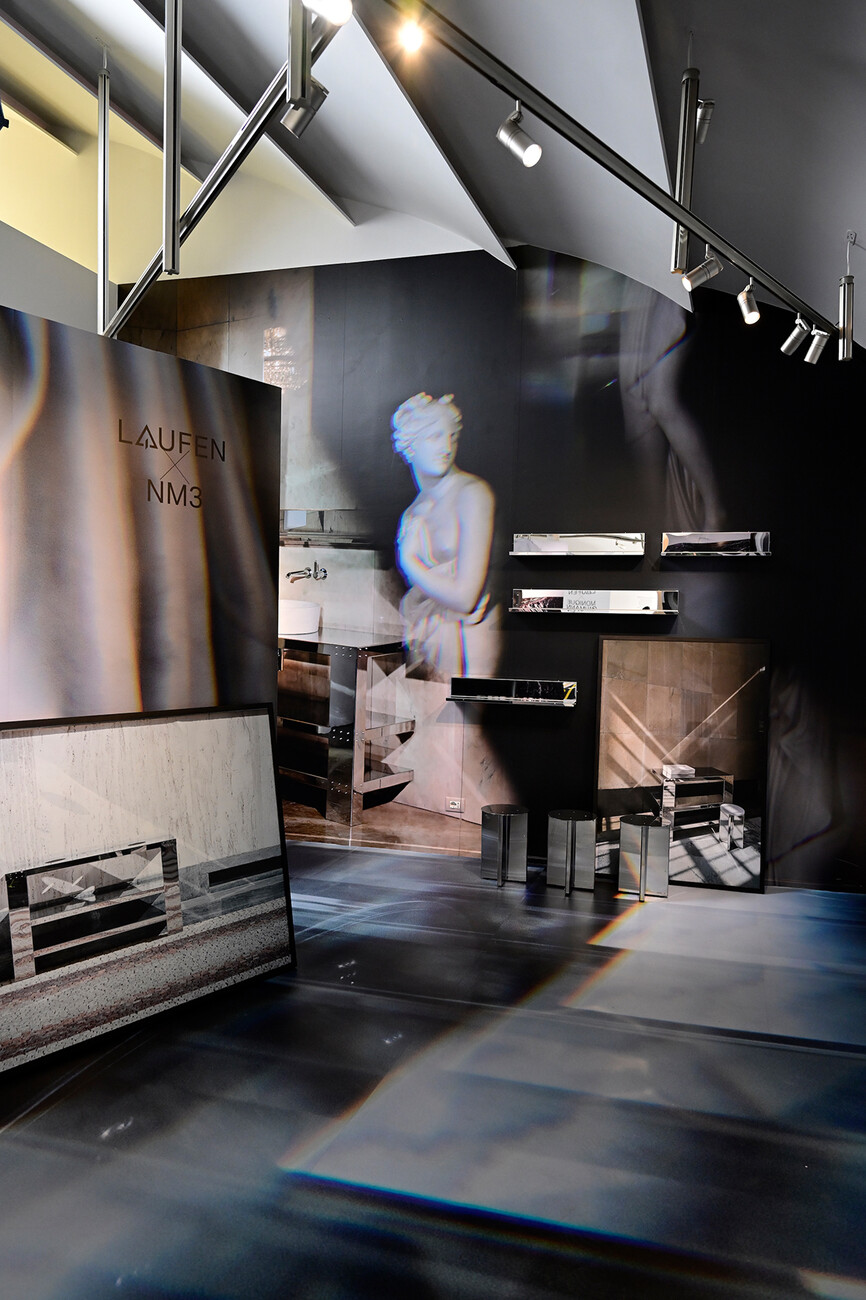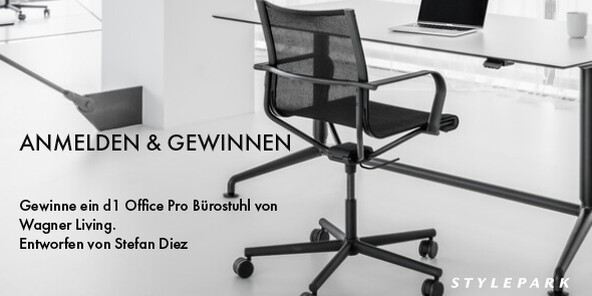STYLEPARK LAUFEN
Outrageously good
Strict geometric lines and shiny stainless steel on the one side, ceramics and dynamic colour gradients on the other: As part of this year's Milan Design Week, Laufen has created an extraordinary creative dialogue that dissolves the supposed boundaries of bathroom design and offers completely new perspectives. The Capsule Collection by NM3, for example, is made of stainless steel and includes both furniture and other sculptural furnishings. Monique Baumann, in contrast, experiments with materials, techniques and colours and, in the course of this, has reinterpreted three examples of the Kartell x Laufen collection.
Anna Moldenhauer: You both have your own creative expression – NM3's works are purist, geometric. Monique, you create collages from many components, such as colour and different materials. How can I imagine your collaboration with Laufen?
Francesco Zorzi: We started working with Laufen about a year and a half ago. Establishing unusual products for a brand like Laufen, like ours in stainless steel, is a longer journey. Especially because we have our own formal character in the design, which is very architectural-tectonic. We see ourselves as architects designing products and we work a lot with structural truth, with its expression. We stay coherent to our language, even when we cooperate with companies. We were very pleased that Laufen accepted our ideas and dared to take the step of developing this product line with us.
Monique, how do you link your own artistic expression in the collaboration with Laufen?
Monique Baumann: Laufen has known my work for a long time and our ideas fit well together, also because we both design analogue products. The starting point for the current collaboration was a carte blanche: we wanted to show three different objects and they said to me: "Look, we love your work, you have a free hand, you can do what you want!".
Are there commonalities in your practice that one might not recognise at first glance from the outside? For example, that you work in a multidisciplinary way?
Francesco Zorzi: The fact that Monique works with the medium of collage is very interesting for me, because we also use collages in the design process for a new form. Moreover, we look at the disciplines of design and architecture basically scientifically, we always refer to historical references. And in this sense, almost every one of our works is a collage of formal references, ranging from minimalist American art from the seventies to the hardcore modernists among Italian architects, like Angelo Mangiarotti. We apply the collage to arrive conceptually in the "established" ranks of form and design.
What emotions do you want to convey to the viewers through your products?
Monique Baumann: I think our cooperation with Laufen is surprising for the public because they are not used to this abstract design language in bathroom design. The moment of surprise is positive for us because it causes the viewers to become curious and ask questions. It's also a form of emotion, because through the moment of surprise, the new, the unusual, we manage to touch people and arouse their interest. You don't have to understand every one of our works immediately, but if they make you stop and take a closer look, then we have made a precious connection.
Francesco Zorzi: Probably truthness is really the first feeling I hope to convey with our designs. That and the formal consistency, a tectonic, formal simplicity.
What is important to you in the choice of materials, such as durability and sustainability?
Francesco Zorzi: We work mainly with metals and pay very close attention to the steps that make up the production chain and whether they are sustainable. We only have one supplier and a clearly defined framework within which we design. This means that there is no stock, because we only produce on demand – so we can minimise the carbon footprint. In addition, the material stainless steel is completely recyclable and very durable.
Monique, what is important to you when choosing materials?
Monique Baumann: In my work I also do a type of recycling, you could call it a recycling of glamour. I collect many different magazines, cardboard boxes, very different materials, because I find it interesting to create art from something that already surrounds you and behind which there is a story. It doesn't work without that. The main thing is that there is energy in the result, that it is a kind of rock n roll (laughs). I've been recycling materials for my works for 10, 15 years, at a time when sustainability wasn't really an interest for anyone.
Francesco, what excites you and your colleagues at NM3 about working with cold, shiny materials like stainless steel?
Francesco Zorzi: The precision that can be achieved when working with this material. We like to work with historical references and stainless steel is part of the bold traditions of modernism, architecture and product design. Our products reach such a level that they can work in any space.
What was important to you in designing your exhibition space in the Laufen showroom in Milan?
Monique Baumann: One of the ideas was to show what it looks like in my studio when I work. That's why I chose all the details for the show in Milan, from the colour of the floor to the proportions. My studio is an organised mess – the showroom exhibition was much tidier, of course, but I think I was able to communicate the idea. In Milan I improvised a few details, like the lines of tape on the floor, which is what I would do in my studio. I wanted to create a space where people could come in and get the impression that they could be part of the whole.
Francesco Zorzi: Matteo Fiorini from Studio Lys and Studio Achermann designed the installation and Oliver Helbig photographed our products in magnificent Milanese entrance halls, like in front of marble walls. We liked the idea very much because the marble surfaces are somehow coherent with our works.
Studio Lys' installation for the Laufen showroom in Milan was titled "How dare you", which is a provocative question. To what extent do you take up this attitude in your work?
Monique Baumann: The title was decided at a later stage, so we didn't base our work on it. But I think it ideally describes the fact that with our work Laufen has freed itself from a classical production in favour of the joy of experimentation. Laufen dares to go new ways in the design of sanitary ceramics and bathroom furniture instead of relying on a classic design. That is a courageous step.

















